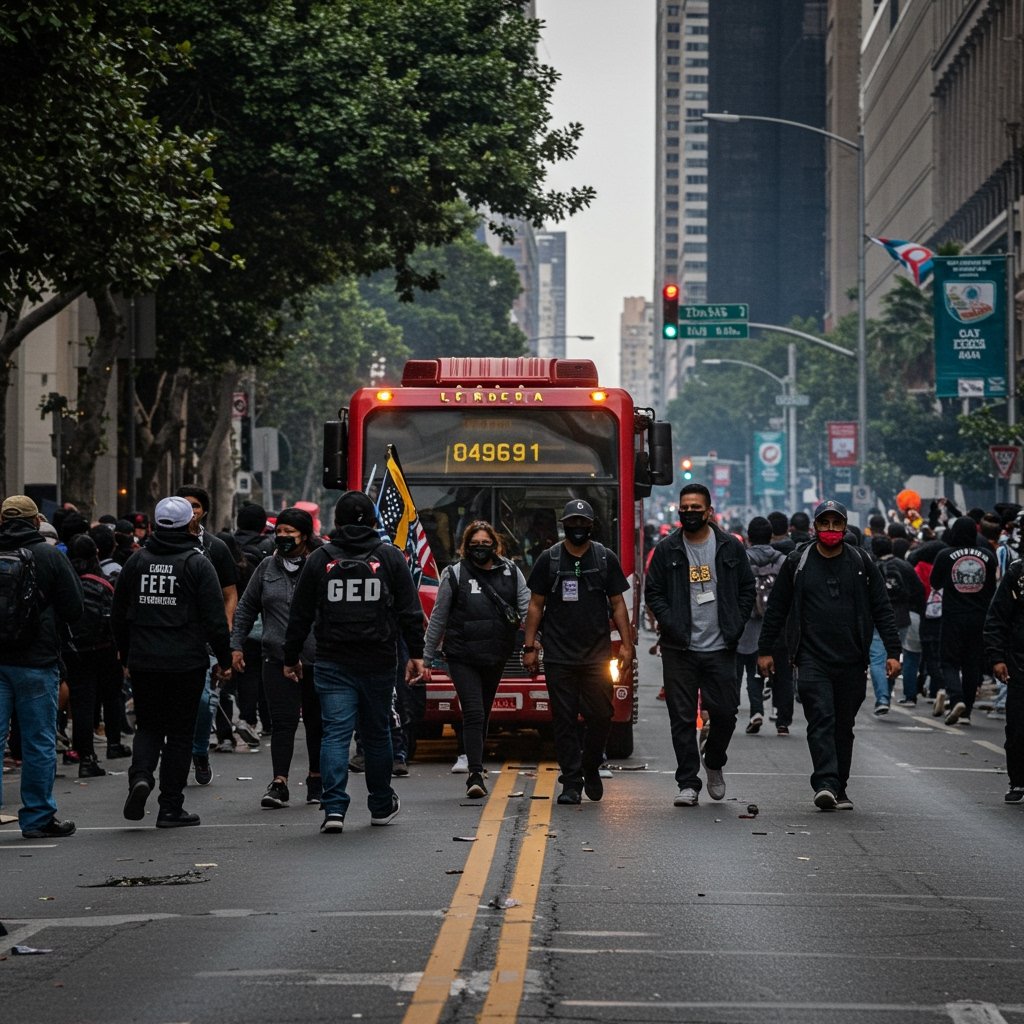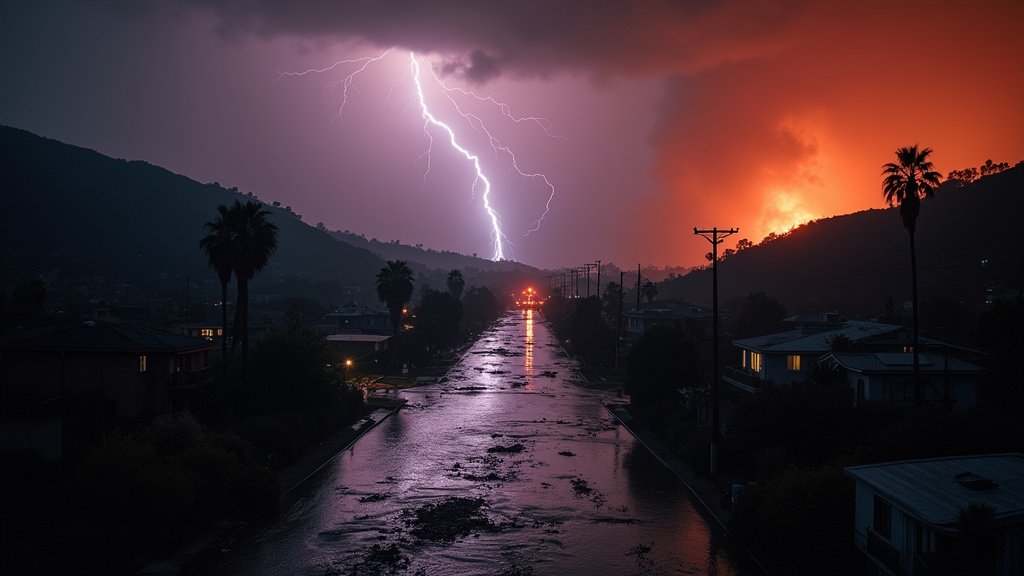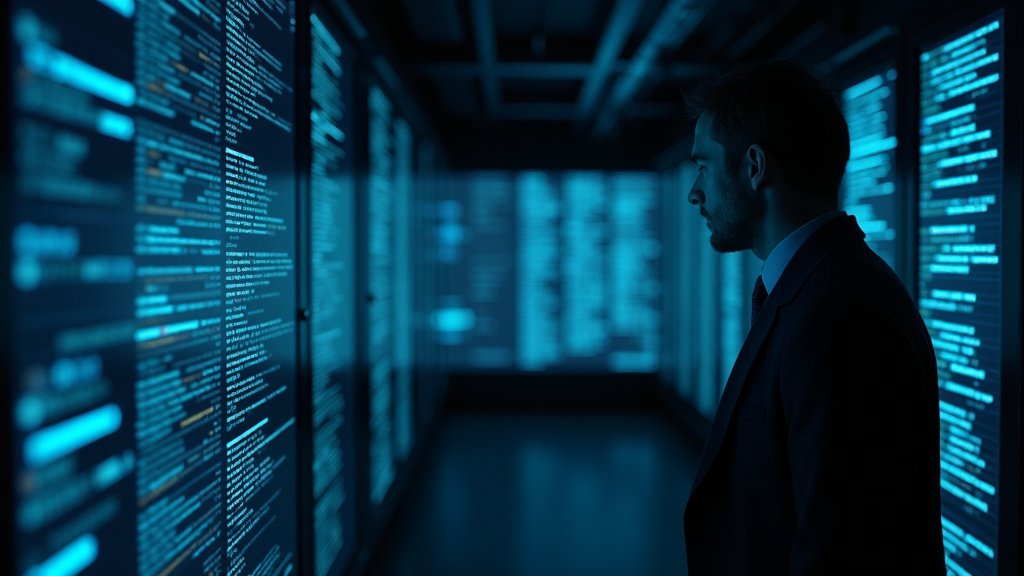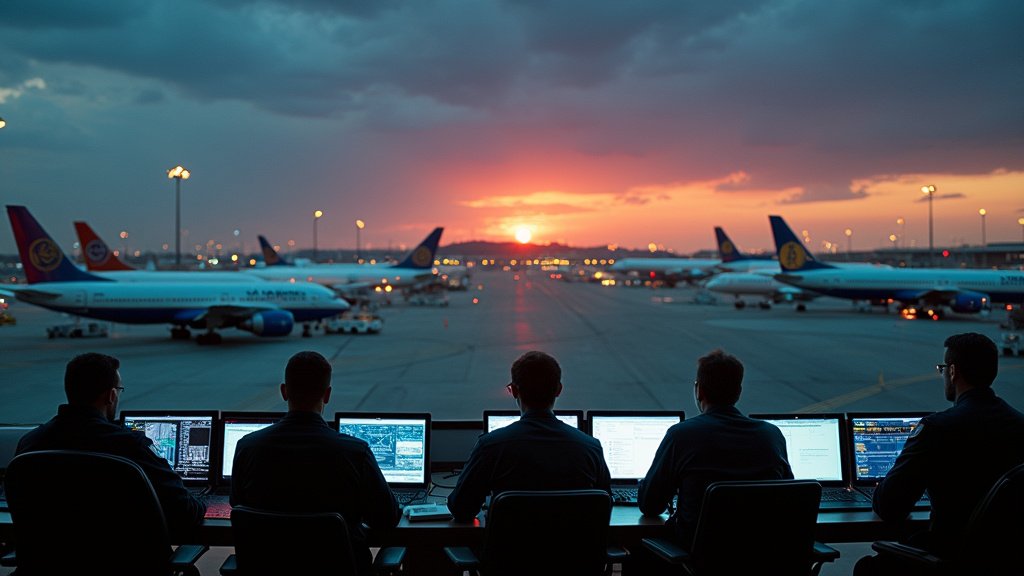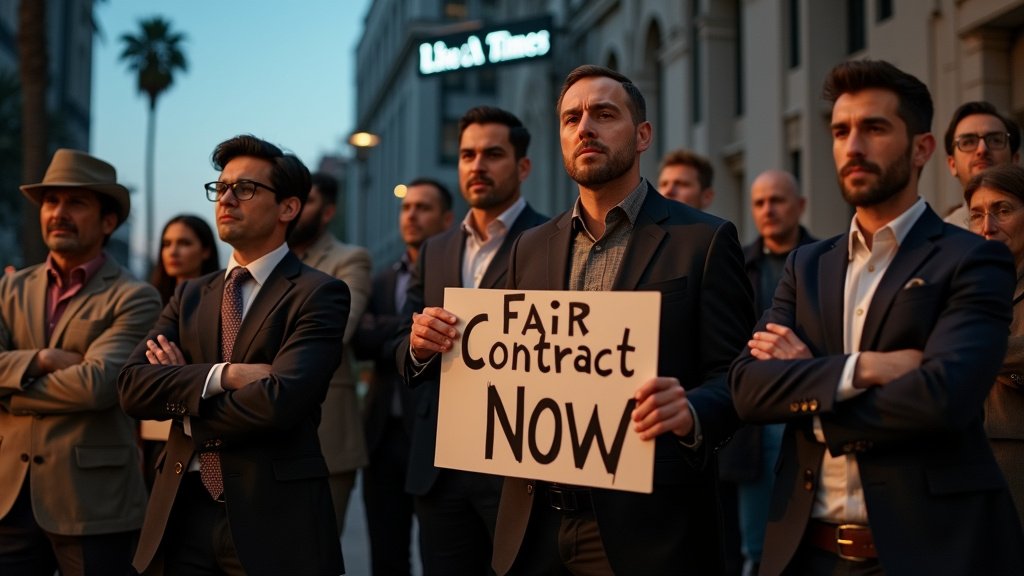Protests over operations conducted by U.S. Immigration and Customs Enforcement (ICE) escalated into significant unrest and instances of rioting across Los Angeles beginning Friday, June 6. The week saw widespread demonstrations, property damage, and a large number of arrests, prompting reactions from both state and federal officials.
Escalation and Destruction Across the City
The initial protests, sparked by federal agents arresting immigrants in locations such as the Fashion District and a Home Depot parking lot in Downtown Los Angeles on Friday, June 6, quickly intensified. By Saturday, June 7, the demonstrations had spread to neighboring cities, including Paramount and Compton. Sunday, June 8, was described as the third and most intense day of protests in Downtown Los Angeles.
Reports from the ground indicated a rapid deterioration of order. Demonstrators set fires in dumpsters and trash bins, shattered store windows, and defaced buildings with graffiti. Prominent targets for vandalism included the LAPD Headquarters, the U.S. Courthouse, and the old Los Angeles Times building. Protesters also threw objects at police vehicles, further heightening tensions between law enforcement and the crowds.
The disruption extended beyond property damage to critical infrastructure. Protesters blocked traffic on the 101 Freeway, causing significant delays and safety concerns. Amidst the chaos, at least four self-driving Waymo cars were reportedly set on fire, highlighting the unpredictable nature of the unrest.
Official Response and Political Reactions
Local law enforcement agencies struggled to contain the widespread demonstrations. LAPD Chief Jim McDonnell stated that officers were “overwhelmed” by the scale and intensity of the protests. Police forces utilized crowd-control munitions in attempts to disperse protesters after declaring unlawful assemblies. Authorities issued an unlawful assembly order that resulted in the closure of several blocks in Downtown Los Angeles.
The escalating situation drew attention from the highest levels of government. President Trump commented on the events via Truth Social, advocating for the arrest of masked protesters and urging the deployment of troops to Los Angeles. Responding to the unrest, President Trump ordered approximately 700 active-duty Marines to join the estimated 2,100 members of the California National Guard already operating in Los Angeles, Paramount, and Compton.
California Governor Gavin Newsom publicly pushed back against the administration’s actions, particularly regarding the deployment of federal military forces. Governor Newsom suggested pursuing additional legal action against the administration regarding the use of Marines, calling it illegal.
Significant Number of Arrests
The week of protests resulted in a substantial number of arrests across the Los Angeles area. By the end of Wednesday, June 11, at least 851 people had been arrested since the demonstrations began on Friday, June 6.
Law enforcement agencies contributed to this total across various jurisdictions. The Los Angeles Police Department (LAPD) accounted for nearly half of these arrests. Charges brought by the LAPD included failure to disperse, throwing objects and fireworks at officers, looting, and arson. The California Highway Patrol (CHP) arrested at least 106 people, while the Los Angeles County Sheriff’s Department (LASD) arrested at least nine individuals.
Among those taken into custody during the protests was a prominent union leader, though specific details regarding their charges were not immediately available. The weeklong tally of immigrant arrests by federal agents in the LA area, which initially triggered the protests, exceeded 100.
Ongoing Tensions
The series of protests highlighted deep-seated tensions surrounding federal immigration enforcement policies and their impact on local communities in Los Angeles. The response from law enforcement and conflicting stances between state and federal leaders underscore the complex challenges posed by large-scale civil unrest tied to contentious national issues. While the intensity of the protests reportedly decreased after Wednesday, June 11, the events left a significant mark on the city and raised questions about protest management, civil liberties, and the boundaries of federal authority within states.

